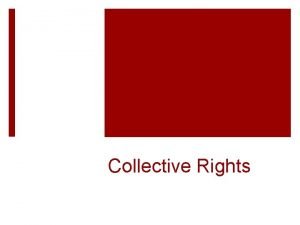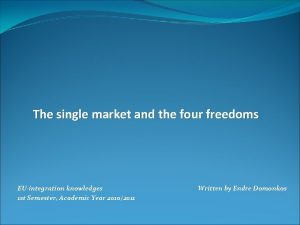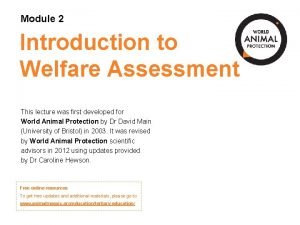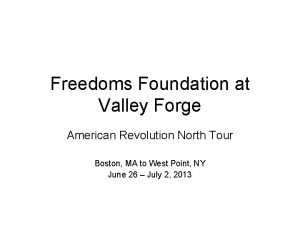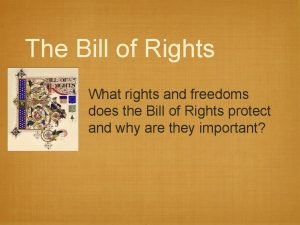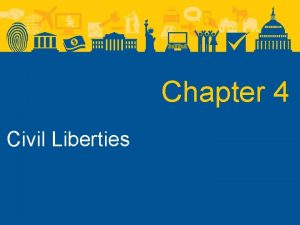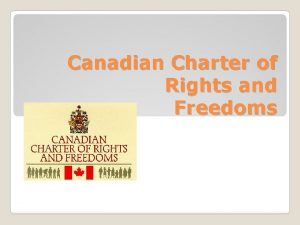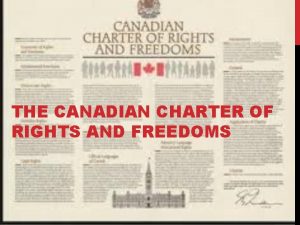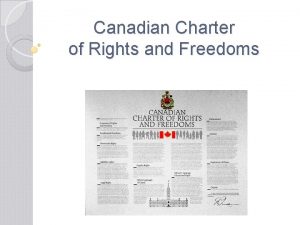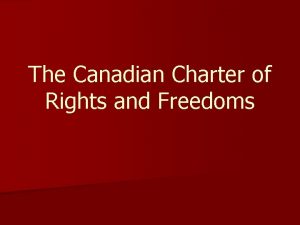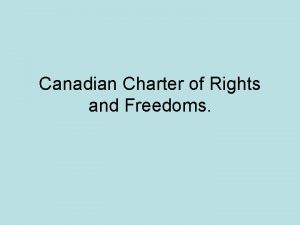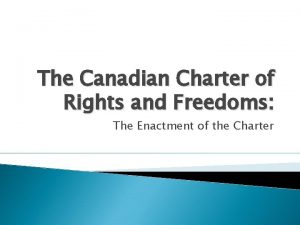THE CANADIAN CHARTER OF RIGHTS AND FREEDOMS The










- Slides: 10

THE CANADIAN CHARTER OF RIGHTS AND FREEDOMS

The Charter of Rights and Freedoms • The Charter is part of the Canadian Constitution enacted under the Government of Prime Minister Pierre Trudeau. • The Constitution is a set of laws containing the basic rules about how our country operates

• The Charter came into effect on April 17, 1982. It was part of a package of reforms contained in a law called the Constitution Act, 1982. • The Charter sets out those rights and freedoms that Canadians believe are necessary in a free and democratic society.

What is a Right? • RIGHT: legal, moral, or social claim that people are entitled to, primarily from their government. Example – a person accused of committing an offence has the RIGHT to a fair trial.

• FREEDOM: freedom is a right – the right to live your life without interference from the government. Example – you have the right to seek employment anywhere in Canada.

Freedom of expression Some of the rights and freedoms contained in the Charter are: The right to a democratic government The right to live and to seek employment anywhere in Canada Legal rights of persons accused of crimes Aboriginal peoples' rights The right to equality, including the equality of men and women The right to use either of Canada's official languages The right of French and English minorities to an education in their language The protection of Canada's multicultural heritage

The Constitution • The Constitution is the supreme law of Canada. • All other laws must be consistent with the rules set out in the Constitution. If they are not, they may not be valid. • Since the Charter is part of the Constitution, laws that limit Charter rights may be invalid. This makes the Charter the most important law we have in Canada.

The Bill of Rights • The Charter was preceded by the Canadian Bill of Rights, which was enacted in 1960. • The Bill of Rights was only a federal statute, rather than a constitutional document - it was limited in scope, was easily changed by Parliament, and it had no application to provincial laws. • The ineffectiveness of the Canadian Bill of Rights motivated many to improve rights protections in Canada.

Universal Declaration of Human Rights • The movement for human rights and freedoms emerged after World War II - also wanted to adhere to the principles in the Universal Declaration of Human Rights. • The Charter is more explicit with respect to the guarantee of rights and the role of judges in enforcing them than was the Bill of Rights.

In Class Task: • Select two charter rights/freedoms and give at least two reasons why they are important to you and two reasons why they are important to Canadian society. (use extra paper if necessary) • Write your response in your notebook. Must be at least a page response (double spaced)

